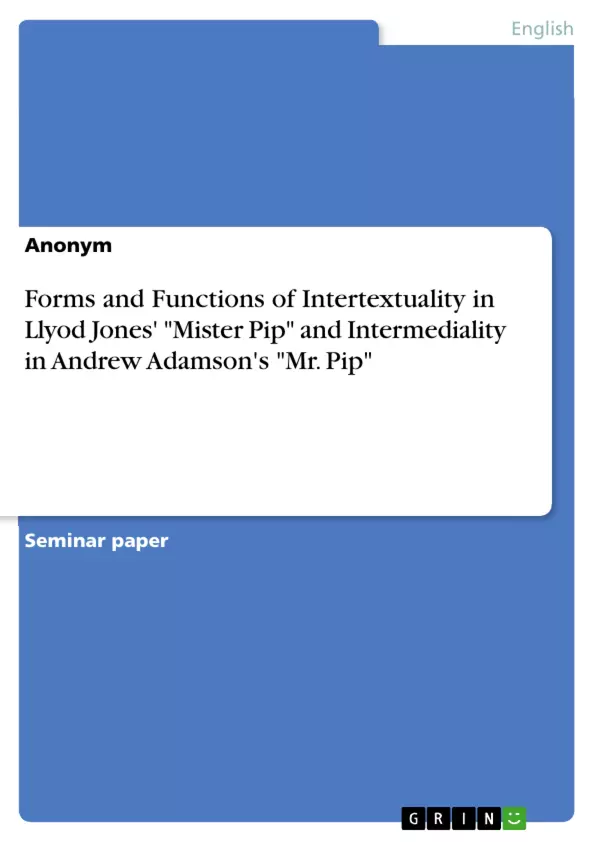This paper will deal with the intertextuality in Lloyd Jones’ novel “Mister Pip” and the intermediality in the movie adaptation “Mr. Pip” by Andrew Adamson. Both use Charles Dickens’ novel “Great Expectations” as a reference.
The paper will analyse this intertextuality and intermediality in order to find out which function the reference to “Great Expectation” take up in both media. So it can be measured whether the occurrence of Dickens’ novel can be seen as a means of appropriation or writing-back.
Therefore, the terms of intertextuality, intermediality, appropriation and writing-back will be explained at first so they can be applied to first the novel “Mister Pip” and following the movie “Mr. Pip” afterwards. At the end it will be stated what function the intertextuality/intermediality takes up in novel and movie and if these are means of appropriation or writing-back.
Inhaltsverzeichnis (Table of Contents)
- Introduction
- The Key Concepts
- The Concepts of Intertextuality and Intermediality
- The Concepts of Appropriation and Writing-back
- Charles Dickens' Great Expectations in Papua New Guinea
- Great Expectations as intertextual reference in Lloyd Jones' Mister Pip.
- Great Expectations as intermedial reference in Andrew Adamson's Mr. Pip.
- Conclusion
Zielsetzung und Themenschwerpunkte (Objectives and Key Themes)
This paper explores the intertextuality and intermediality of Lloyd Jones' novel Mister Pip and Andrew Adamson's film adaptation Mr. Pip, both of which draw heavily on Charles Dickens' Great Expectations. The analysis aims to identify the function of this intertextual reference in both mediums and assess whether it serves as a means of appropriation or writing-back in the context of post-colonial literature.
- Intertextuality and Intermediality
- Appropriation and Writing-back
- Post-colonial Narrative Strategies
- The Impact of Colonialism on Culture and Identity
- The Role of Literature in Post-colonial Societies
Zusammenfassung der Kapitel (Chapter Summaries)
The introduction establishes the context of the paper, highlighting the intertextual and intermedial references to Great Expectations in both Mister Pip and Mr. Pip. It outlines the objective of the paper, which is to investigate the function of these references in both mediums and determine if they serve as appropriation or writing-back.
Chapter 2 provides definitions and explanations of key concepts, including intertextuality, intermediality, appropriation, and writing-back. It explores the theoretical framework of post-colonial studies and how these concepts relate to the analysis of post-colonial texts.
Chapter 3 examines the specific ways in which Great Expectations functions as an intertextual reference in Mister Pip and an intermedial reference in Mr. Pip. It explores the textual and cinematic adaptations of the novel within the context of Papua New Guinea and the impact of colonialism on the characters and narrative.
Schlüsselwörter (Keywords)
This paper focuses on the concepts of intertextuality, intermediality, appropriation, and writing-back in relation to post-colonial literature and the novel Mister Pip. The analysis centers on the use of Charles Dickens' Great Expectations as an intertextual and intermedial reference in both the novel and its film adaptation, exploring the impact of colonial influence on post-colonial narratives and the potential for post-colonial authors to utilize colonial literary traditions for their own purposes.
- Quote paper
- Anonym (Author), 2018, Forms and Functions of Intertextuality in Llyod Jones' "Mister Pip" and Intermediality in Andrew Adamson's "Mr. Pip", Munich, GRIN Verlag, https://www.grin.com/document/920323



